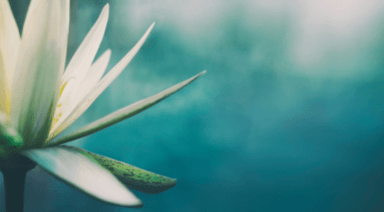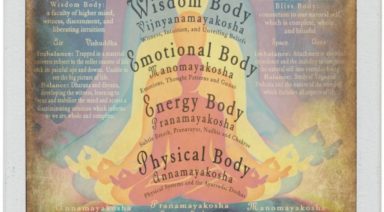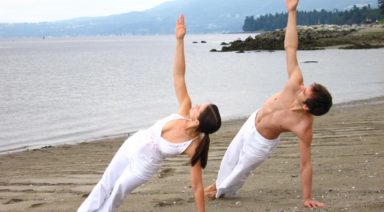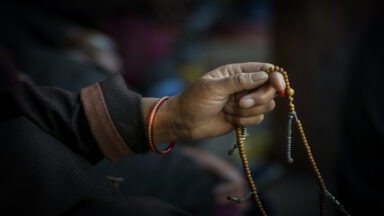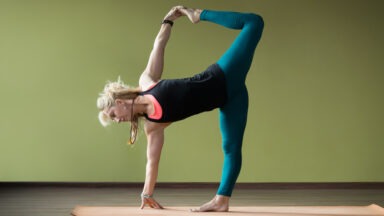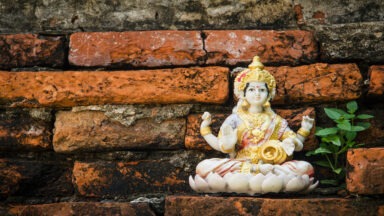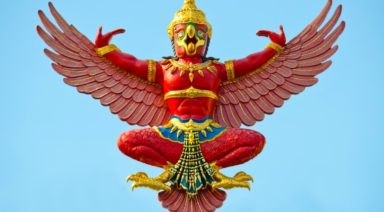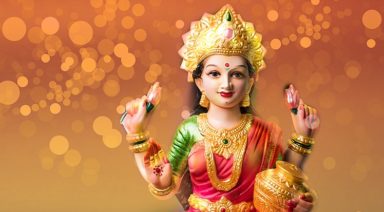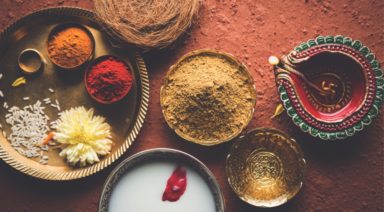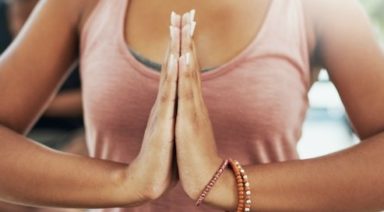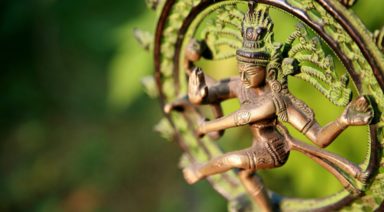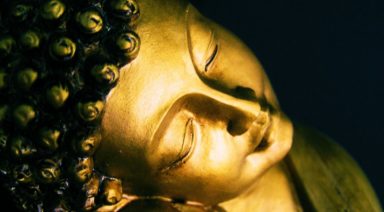The Secret of Namaste

Namaste: I honor, respect, recognize and bow to the light in you and me.
This sacred gesture, used in many yoga practices, meditations and prayers, holds a secret wisdom. When the mind and senses bow to the Heart Chakra, the union between body and soul is achieved. The key, however, is to go deep into the Heart Chakra where the soul glows its life-giving presence, bringing breath and heartbeat to your body.
The Heart Chakra
Why does one need to go deep into the Heart Chakra, and how does one achieve this process? The reason for going deep into the Heart Chakra is to guide the senses that are controlled by the mind and also control the mind, into the Heart.
When the senses are only aware of the life around your body, the senses cannot be fully aware of your soul in the Heart Chakra. The senses must be withdrawn; in Yoga this is called “Pratyahara.”
By withdrawing the senses, your mind’s awareness turns inward. To withdraw the senses and still be in the mind is not pratyahara.
True pratyahara is withdrawing the senses from the outer story of separateness, into the inner Truth of oneness that glows in your heart.
Essence of Oneness
The experience of oneness is held in the Heart Chakra, not the mind. The feeling that reveals you are in oneness is pure love. Love not based on the material world image, but the pure true love between body and soul, creation and creator.
When the mind and its minion senses are gathered together and guided inward, the gifts of the senses are now in a different reality. This reality is called oneness, innerworld, intuition, soul, spirit, Divine, union, source, etc. The more focused the mind is in its ability to gather the senses, the deeper purity and truth of the experience of oneness — love. When the senses finally enter the Heart Chakra, the senses become calmer and more in your control.
Humility
The secret to this whole process of pratyahara, and going into the Heart Chakra requires humility. Humility is when the mind and the personality it created through senses (known as ego) have reached a willingness to change. The aspiration to transform and discover a new perspective of oneself and life is also the feeling of humility.
So how does one achieve pratyahara, humility and a focused mind, in order to discover what is inside the Heart Chakra?
New Technique for Accessing the Heart Chakra
A very special technique came to me in my mid-20s when I had reached a direction in my life where I was humbled and willing to change. This humility came forth due to the death of my parents in an aviation crash when I was a teenager and my sister’s murder shortly thereafter, resulting in my many illnesses and losing my will to live.
With these techniques, by bowing into the heart, I discovered the purpose for life and found self-love. The process of this technique begins with a beautiful feeling such as love. The ability to feel this feeling build in us is the presence of the Soul.
Remember, light is the image of love.
Mental Centering™ Technique by Savitri
Centering Mental Energy (1 ½ minutes)
Sit erect with your eyes closed. With the middle finger of each hand touching the front of each armpit, trace a horizontal line to the center of your chest. With the middle finger of your right hand touching your skin, you will feel a sensitive area on your sternum. Massage gently for a few minutes. This is your Heart Chakra, the doorway to your soul. Imagine light glowing lovingly in the Heart Chakra.
- With your eyes closed, place your hands with your fingers together, slightly cupped, on the right and left sides of your head, facing your ears. Your hands should be approximately 3 inches away from your head.
- Exhaling, move your hands together in Namaste, not more than 1 inch away from your face, with the tips of your thumbs at the same level as your eyebrows.
- Inhale. On the next exhalation move your hands down slowly to your Heart Chakra. As you do this, imagine your mind following a straight line in the center of your body and offer your mind to your heart.
- Say inwardly, “I offer my mind and senses to my loving soul within.”
- Do this technique 3 or more times and breathe slowly and peacefully.
Benefits
Increases the power of Namaste, intuition, self-love, respect, and conscience bringing calmness to the mind and body as they discover the soul’s presence.
Notice at the end of this technique the hands end up in Namaste. This is the exact energetics of what happens to us when we say Namaste or bring our hands in prayer. The mind withdraws its ego perception of another and bows inside the Heart Chakra to the true perception the Soul-Light holds.
The mind now is awakened to the love and light that is in your body; this always recognizes the love and light in anyone or anything.
The first level of enlightenment is to keep this connection consistent. Namaste is the energetics and action of self respect and respect for others. Respect is one of the keys to the teachings of yoga. This union of self-respect between mind, body and soul, and respect for others, is the feeling of love. And through this love the soul can shine freely through your body and to others.
Let the secret gift of Namaste bless your yoga journey on and off the mat. Namaste.
© Copyright 2015 by Savitri, all content, all rights reserved. Heartfull Meditation™ and technique trademarked by Savitri.
What is Ahimsa and How to Practice It in Everyday Life

Whether you’re experienced in yoga or just starting out, integrating the practice of ahimsa in everyday life can lead to wonderful strides. Ahimsa is one of the five yamas, which are the ethical, moral and societal guidelines for yogis. Ahimsa can be distilled into a practice of non-violence in all aspects of life, from the physical to the mental and emotional.
Non-violence is defined by honest compassion and true love. You can achieve this by embracing love: learn to love deeply, and also to be loved. However, this is impossible to do if you choose to ignore or escape from certain traits held in yourself.
How Does Non-Violence Manifest in Daily Life?
To understand how non-violence can manifest in our lives each day, we must first learn how subtle daily actions and responses contain elements of violence. This often happens against ourselves. When our thoughts contain negative responses like disappointment, resentment, or guilt, when we feel shame, we are subtly creating violence. If you can’t forgive someone for something they’ve done against you, or if you can’t forgive yourself for something you’ve done, this is an act of violence because it pushes love away.
Expecting too much of yourself and putting all responsibility in your own hands is a type of violence too, as is expecting that the world will run according to your design. You’re being violent towards yourself and the world at large with these kinds of mindsets. Acting out of our fears is a form of violence to the self. We inflict violence on others daily in subtle ways, but this is simply an outward expression of the war that goes on inside of everyone. For instance, when we resent others, it creates a negative atmosphere. Finding inner peace through ahimsa will in turn allow us to come to peace in interactions with others. This may come as a surprise if you consider yourself a non-violent person. Consider how violence can function in the subtlest of ways. Violence disguises itself well; it manifests in words, actions and even inner thoughts.
Instead, embrace and act from your inner truth. Truth and non-violence are a pair.
Yoga is a great way to access ahimsa in our daily interactions. By practicing yoga daily, you can confront your own inner darkness impartially and with compassion. This then paves the way for transforming negative emotions and tendencies without acting on these feelings.
Yoga creates the avenue to getting in touch with any violence you hold inside of you through non-violent means and therefore to express negativity without hurting anyone, yourself included. Releasing negative energy through positive intentions transcends the negative aspects of yourself, creating peace in the world around you.
How to Incorporate Ahimsa
You can incorporate ahimsa into daily activities. For example, some yogis don’t eat meat. But whatever you decide to do with your diet, you should focus on practicing self love in all that you do.
Another way to bring ahimsa into your life is through compassion. It’s the ability to accept events as they are with an open heart, letting go of reacting in any negative way and replacing those feelings with kindness and acceptance.
Also, move with intention. Consciously put non-violence into action. Instead of letting the limits of your body create stress, make the decision to intentionally respect and even love the limitations your own body has. Perform yoga poses gracefully, but do it without force.
Yoga gives you the chance to practice non-violence in your mind at the same time. While tuning in to your body, simultaneously start to watch as your thoughts form. Cultivate your awareness of your own thoughts to find if there are hints of violence against yourself or others in your life. Awareness doesn’t mean reaction, though. You don’t need to push these thoughts away ” just recognize them. Observe as they come into your consciousness, and then watch as they again leave.
Ahimsa in the Body and Mind
We can understand ahimsa as the being mindful of thoughts. Thoughts naturally move into and out of our minds. The thoughts themselves don’t necessarily cause harm. However, holding onto thoughts and letting them repeat again and again in your mind is what in the end turns into actions or words of violence. Start to practice simply observing your thoughts instead of reacting to them. When you allow yourself to acknowledge and observe, you’ll find that your thoughts slip from your awareness just as easily as they come in.
You can be at the peak of health and still have your thoughts deeply affect your wellbeing. Yes, exercising and eating well are hugely important for your health, but even if you do these things “right,” your thoughts can harm you. Negative thinking sends out messages to the body that trigger the fight or flight response. Thoughts do this even if there’s no outside threat.
The fight or flight response secretes cortisol, which you might know better as the stress hormone. This, in turn, lowers the immune system, and that then makes us more likely to experience physical pain and sickness. And again, it’s not just those pesky bad thoughts we have about ourselves that do this. Jealousy, anger and judgement toward others make us feel bad as well.
That’s where our non-violent thoughts come in. When we think lovingly, these thoughts trigger dopamine’s release into the body. Dopamine is that chemical that makes you feel good and relax. Unlike cortisol, dopamine brings strength to the immune system. It can even cure illness. Those who think of themselves as optimists tend to have stronger immune systems and recover faster from illnesses and injuries. Optimists may even live longer than those who think of themselves as pessimists.
What This Means for You
When you turn your yoga practice into a complete lifestyle, ahimsa can guide your daily interactions with yourself and others. Anyone, regardless of experience, can get frustrated when the physical components of yoga don’t move forward as quickly as planned. Keeping ahimsa in mind as we practice yoga lets us move out of negative thoughts about the body. We can then accept ourselves totally, no matter how flexible, how strong we may be in any given moment.
This translates to all aspects of our lives. In the physical sense, non-violence means not pushing yourself over the edge. You can, of course, still challenge yourself so that you can grow; in fact, you must. But embracing ahimsa means not pushing yourself to harm.
You shouldn’t put much stock in holding a handstand long enough to please your ego if it brings you harm. Likewise, you shouldn’t hold on to resentment or jealousy against yourself or someone else. Embracing ahimsa instead will improve your own well-being as well as those around you.
Everyone holds pain inside themselves, but you can overcome this in a positive way when you practice ahimsa. There is nothing inherently wrong with this; it’s human nature. We must, however, learn to fully experience these negative feeling without reacting negatively to them. This may seem contradictory, but ahimsa leads to a path of peaceful living. By observing but not acting on our natural feelings of pain, hatred, pain and violence will move out of our lives, and doors will open to new understanding.
Let go of expectations of what you should do. Stop clinging to the need to scold yourself with negative, violent thoughts. When we do this, our bodies respond. Instead of bringing in those negative emotions and working against us, our bodies start working with us.
Practice ahimsa in your interactions each day by accepting, then releasing negative thoughts about yourself and others. If you’re looking for other ways to bring ahimsa into your everyday practices, you can find them here on Gaia. You can have ahimsa in your diet, in your thoughts, and in how you communicate with the people around you.
The yoga practice of non-violence can easily move into all aspects of your life. Yoga creates a peaceful reconciliation with your true nature. Non-violence comes from love of the true self, from true self-acceptance. This ahimsa comes from deep in the heart.



